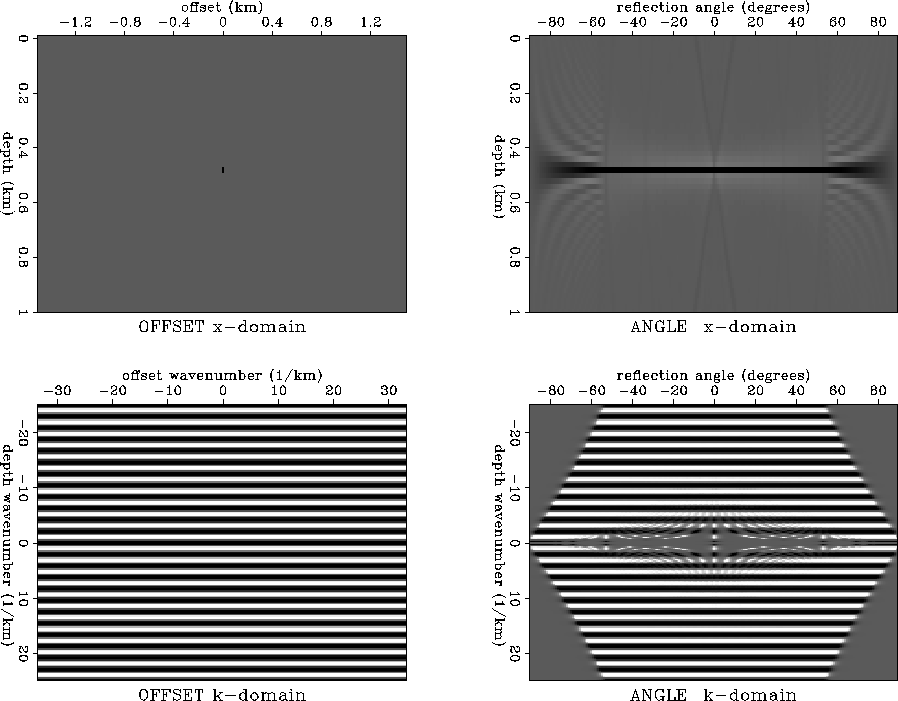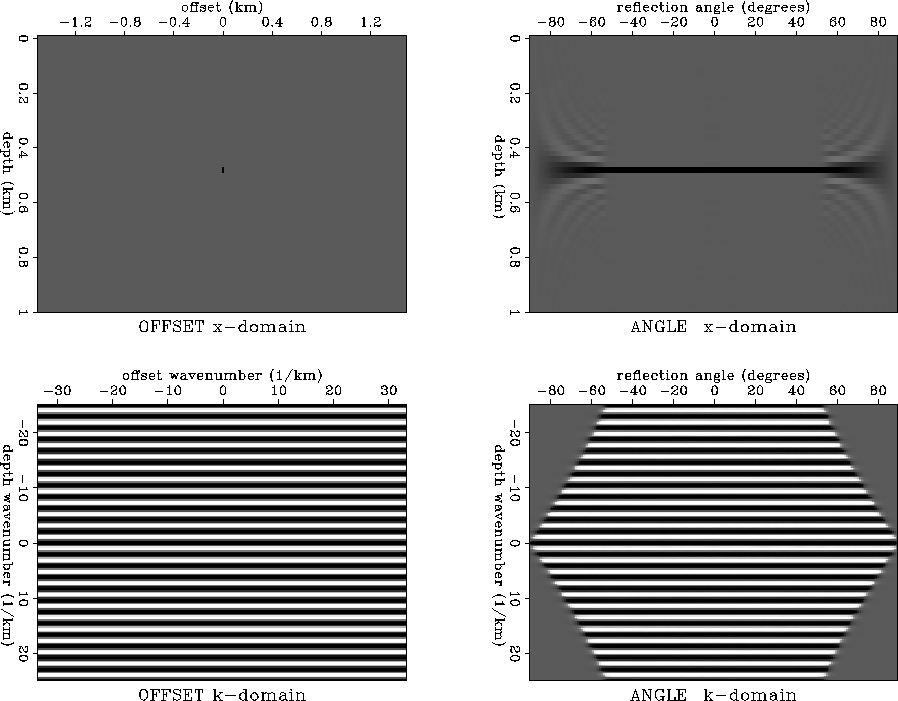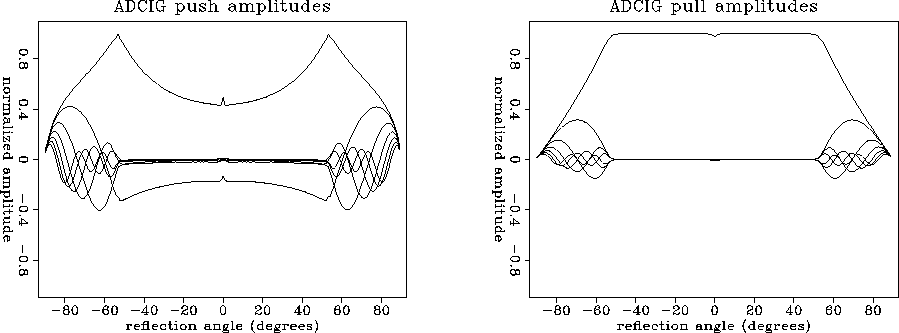




Next: Incorrect imaging condition
Up: Sources of inaccuracy
Previous: Limited temporal frequency bandwidth
A third source of inaccuracy is the actual implementation of the radial-trace
transform. In theory, RTT can be implemented either as a push operator
(loop over input) or as a pull operator (loop over output).
Figure (6) shows an example with a push
implementation (from the kz-kh domain to the  domain),
and Figure (7) shows a pull implementation (in the
domain),
and Figure (7) shows a pull implementation (in the
 domain from the kz-kh domain).
domain from the kz-kh domain).
As expected, the push implementation leaves empty regions in the  domain, while the pull implementation fills the entire domain.
After inverse Fourier transform, the amplitude responses in the two cases
are completely different (Figure 8): the pull implementation
generates flat amplitudes, while the push implementation does not.
domain, while the pull implementation fills the entire domain.
After inverse Fourier transform, the amplitude responses in the two cases
are completely different (Figure 8): the pull implementation
generates flat amplitudes, while the push implementation does not.
angpushA
Figure 6 Conversion from offset-domain to angle-domain
image gathers. The push implementation of RTT leaves empty spaces that
degrade the amplitudes. This effect can be partially corrected by
weighting with the transformation Jacobian.

Under those circumstances, it would be tempting to consider just the
pull implementation.
However, inversion for angle-domain regularization, requires
implementations for both the forward and adjoint operators.
Therefore, if we use pull in one transformation,
we need to use a corrected push in its adjoint Claerbout (1995).
This correction is given by the Jacobian of the transformation from
kh to  or ph.
or ph.
angpullA
Figure 7 Conversion from offset-domain to angle-domain
image gathers. The pull implementation of the RTT fills the entire usable
space, therefore the amplitude response is correct.
 ampA
ampA
Figure 8 Amplitude response for RTT implemented as
unweighted push (left), and pull (right). Ideally, the amplitude should
be constant at all angles.

Figure 9 shows the angle-domain representation for the ideal
offset-gather in Figure 3. Since we use a wide temporal
frequency band and a pull implementation of RTT, the amplitude response
is flat for the whole usable angle range.





Next: Incorrect imaging condition
Up: Sources of inaccuracy
Previous: Limited temporal frequency bandwidth
Stanford Exploration Project
4/16/2001
![]() domain, while the pull implementation fills the entire domain.
After inverse Fourier transform, the amplitude responses in the two cases
are completely different (Figure 8): the pull implementation
generates flat amplitudes, while the push implementation does not.
domain, while the pull implementation fills the entire domain.
After inverse Fourier transform, the amplitude responses in the two cases
are completely different (Figure 8): the pull implementation
generates flat amplitudes, while the push implementation does not.

![]() or ph.
or ph.

